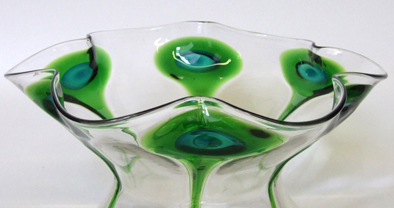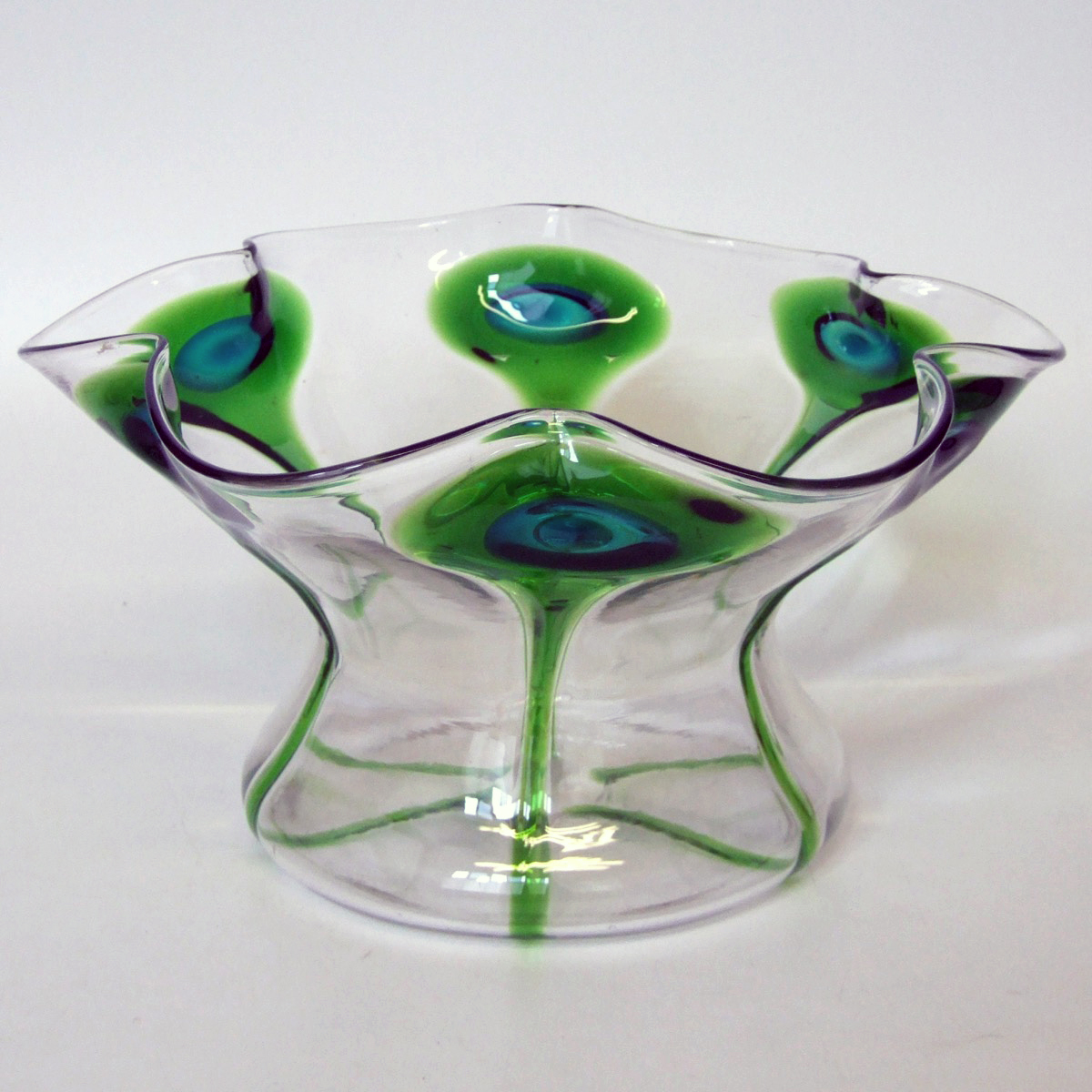
LONDON – What’s the connection between Carmelite monks, a drunken bricklayer and W.A.S. Benson brass lamps, the subject of this column last week? No, we didn’t realize it either but it’s Whitefriars glassworks, a factory founded in London in a former monastery, hence the name.
When it was acquired by James Powell, it produced most (if not all) the glass for Benson and, somewhat later in its existence, one of its more zany products was called the drunken bricklayer vase. Read on, it’ll all become clear.

There was a glassworks between Fleet Street and the River Thames by 1680, if not before, making it Britain’s oldest. The Carmelite monks may even have started it.
After passing through various hands, it was taken over by wine merchant James Powell (1774-1840), who purchased it in 1834. He knew nothing about glass, apart from making a handy container for this wine, but his real intention was to provide his three sons with a business they could call their own.
They were quick learners and soon emerged as one of the country’s major glassmaking dynasties alongside the Williams Thomases at Royal Brierly Crystal; the Stuarts at Stuart Crystal and the Pilkingtons at St. Helens.
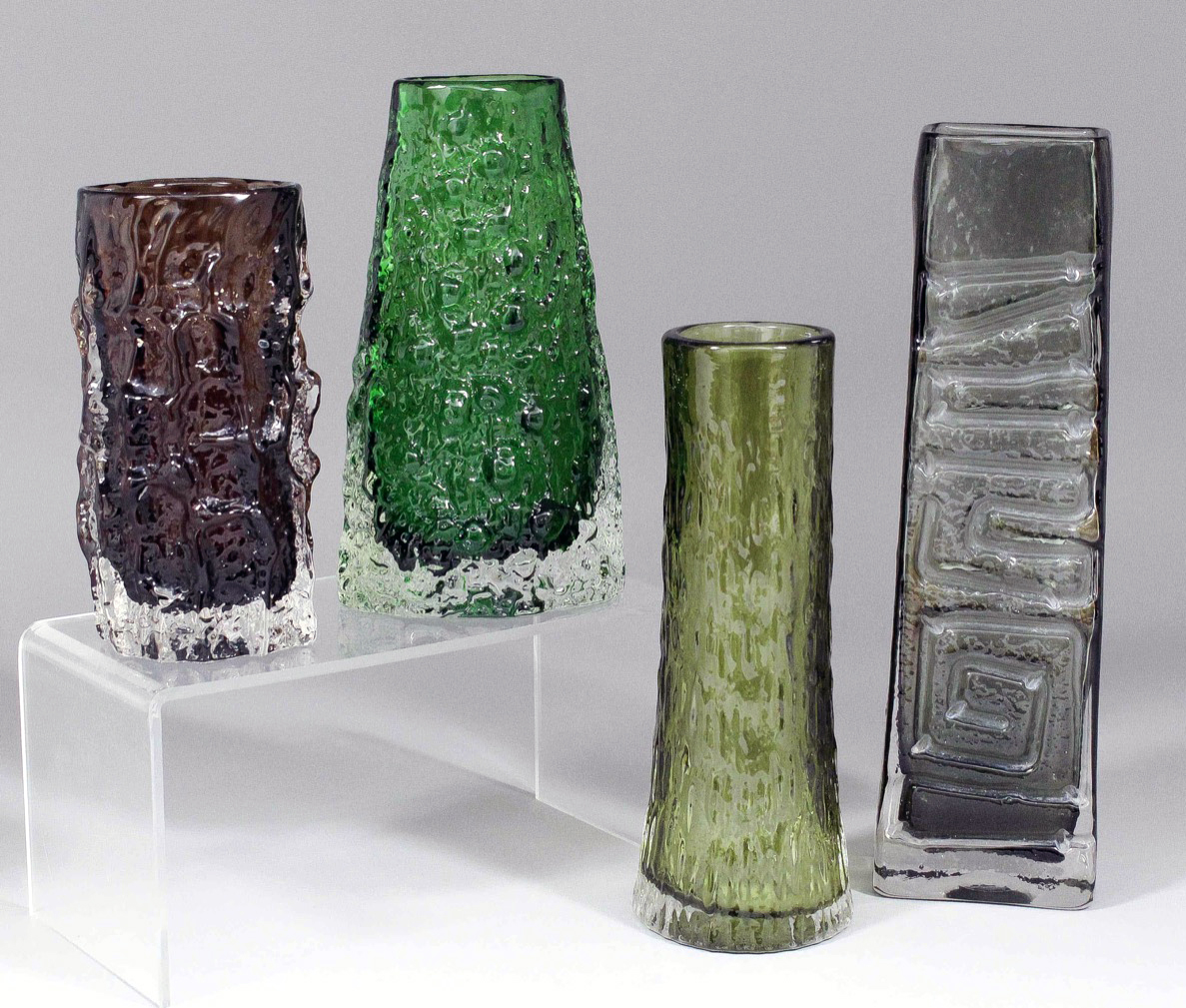
Much of Powell’s early production centered on making stained glass windows for churches, which enjoyed something of a renaissances during the Gothic Revival in the second half of the 19th century. The business by then was under the control of Arthur Powell (1812-1894), who took over on his father’s death.
The firm also invented and patented a method of producing mass-produced black printed glass, used mostly in borders and backgrounds, that was a cheaper substitute for hand-cut pictorial glass.
This brought the firm into contact with such eminent architect designers as Sir Thomas Jackson, Edward Burne-Jones, A.W.N. Pugin and William De Morgan among others, while the plain green drinking glasses designed for William Morris’ home Red House were also made at Whitefriars.
Already experimenting with the production of domestic glassware, the turning point came in 1875, when Harry James Powell (1853-1922) grandson of the founder, joined the company. Despite reading Classics at Trinity College, Oxford, he was fascinated by chemistry and applied his interest to glass production.
He threw himself into experimentation with new colors produced by the addition of chemicals and also developed heat resistant glass for light bulbs and science laboratories. In particular, his development of opalescent, or so-called Vaseline, glass was a major achievement.
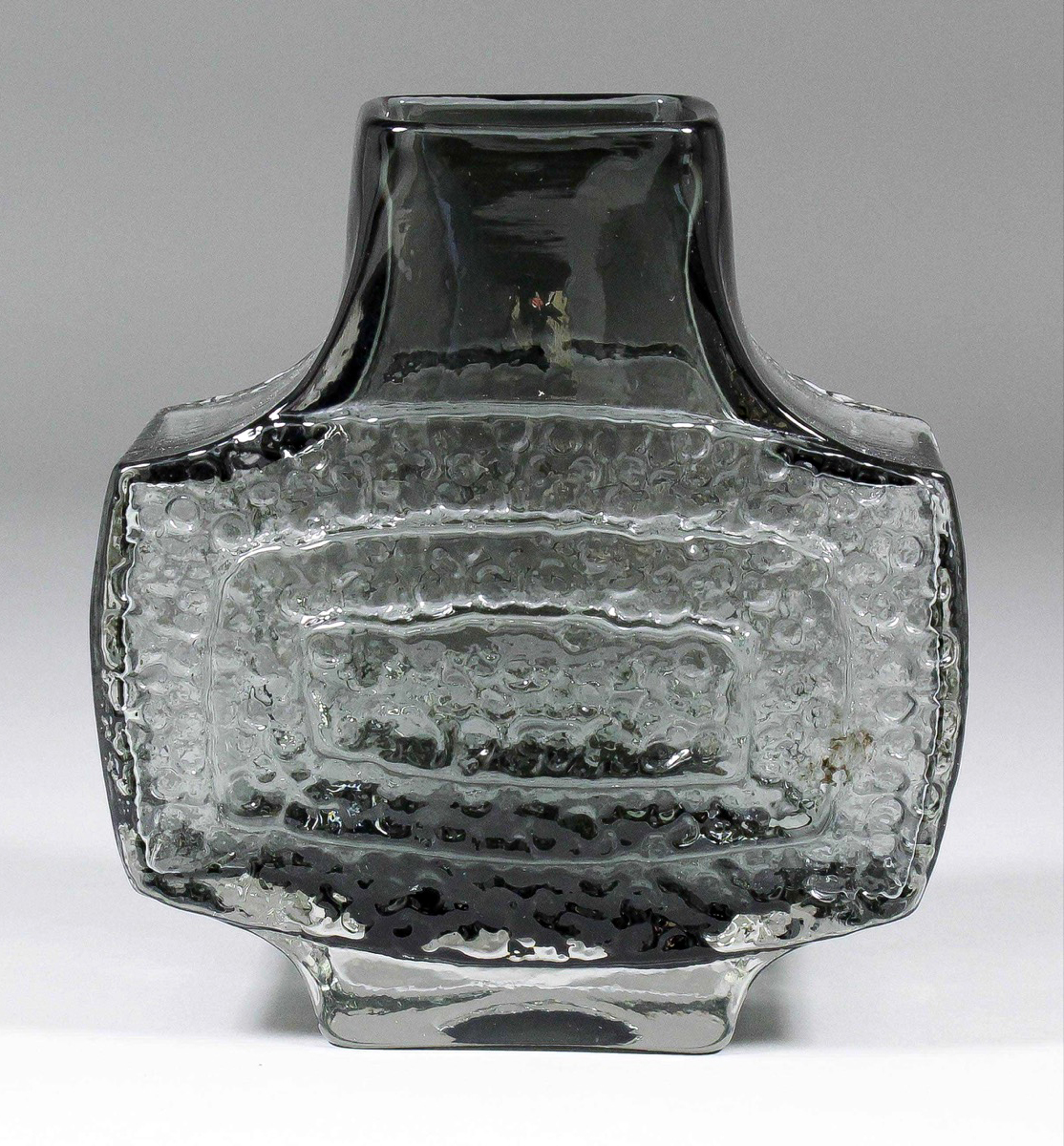
Coinciding with the advent of the sinuous motifs of the Art Nouveau movement, the finest glass came from Whitefriars and it enjoyed instant success. In addition to making stylish shades for Benson’s remarkable electric ceiling and table lights, the factory produced some of their most stunning decorative pieces that today’s collectors covet.
The range was introduced at the Arts and Crafts Exhibition in 1899 and production continued up until the outbreak of World War I. Innovations included the addition of metal oxides to make the glass shimmer, while gold foil between the layers of colored glass produced an eerie iridescence.
The company also produced simple yet stylish green and clear glass vessels for Arts and Crafts silversmiths such as C.R. Ashbee to enclose in decorative metal mounts to great effect.

James Powell & Sons was renamed Powell & Sons (Whitefriars) Ltd. in 1919 and in 1923, the ever-growing company moved to a new glassworks in Wealdstone, near Harrow in West London. The expense of moving was considerable, but the firm’s balance sheet was boosted by the success of stained glass designer James Humphries Hogan (1883-1948).
He had joined the company as a 15-year-old apprentice in 1898 and rose to become chief designer in 1913, art director in 1928, managing director in 1933 and chairman in 1948. He designed windows for a number of English cathedrals, the finest of which are in Liverpool’s Anglican cathedral and those in St. Thomas Church in New York.
The other great name in the firm’s history is Geoffrey Baxter (1922-1995) the only trained designer ever to be employed full time by Whitefriars, who started work in 1954. By then, the austere postwar years had been left behind, the firm’s fortunes revived to a degree by the Festival of Britain exhibition of 1951.
A student at Guildford School of Art, Baxter saw active service with the RAF during the war and subsequently gained entrance to the Royal College of Art. He gained a First Class Honors Degree and diploma in 1953 and with it a traveling scholarship to the British School in Rome.
Baxter was the man behind the so-called Drunken Bricklayer vases as well as others in a range of textured glass, introduced in 1967. They included others with such names as ‘Banjo’, ‘Cello’, ‘Television’, ‘Double Diamond’, ‘Pine Cone’, ‘Sunburst’ and’ Cucumber’ among others that were to become ’60s, design icons and now collected widely.
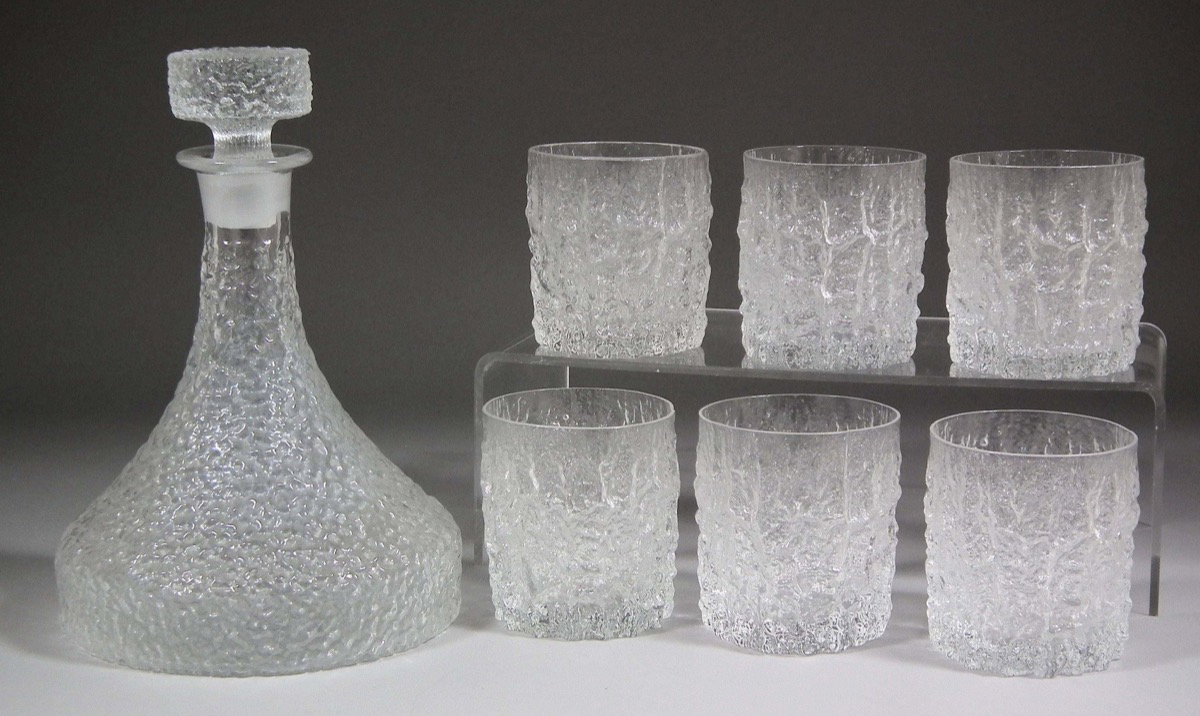
They came into being almost by chance. Working in his garage, Baxter spent his free time making wooden molds, which he lined with anything he could find to give texture to the blown glass. The molds were taken to the factory during the two weeks the managing director, William Wilson, was on holiday and the resulting prototypes placed on his desk awaiting his return.
To Baxter’s surprise and thankfully for today’s collectors, the response was enthusiastic and the texture range went into production. It comprised some 80 different pieces, using such things as tree bark, coiled wire, tin tacks, and spot-welded metal to achieve the effects.
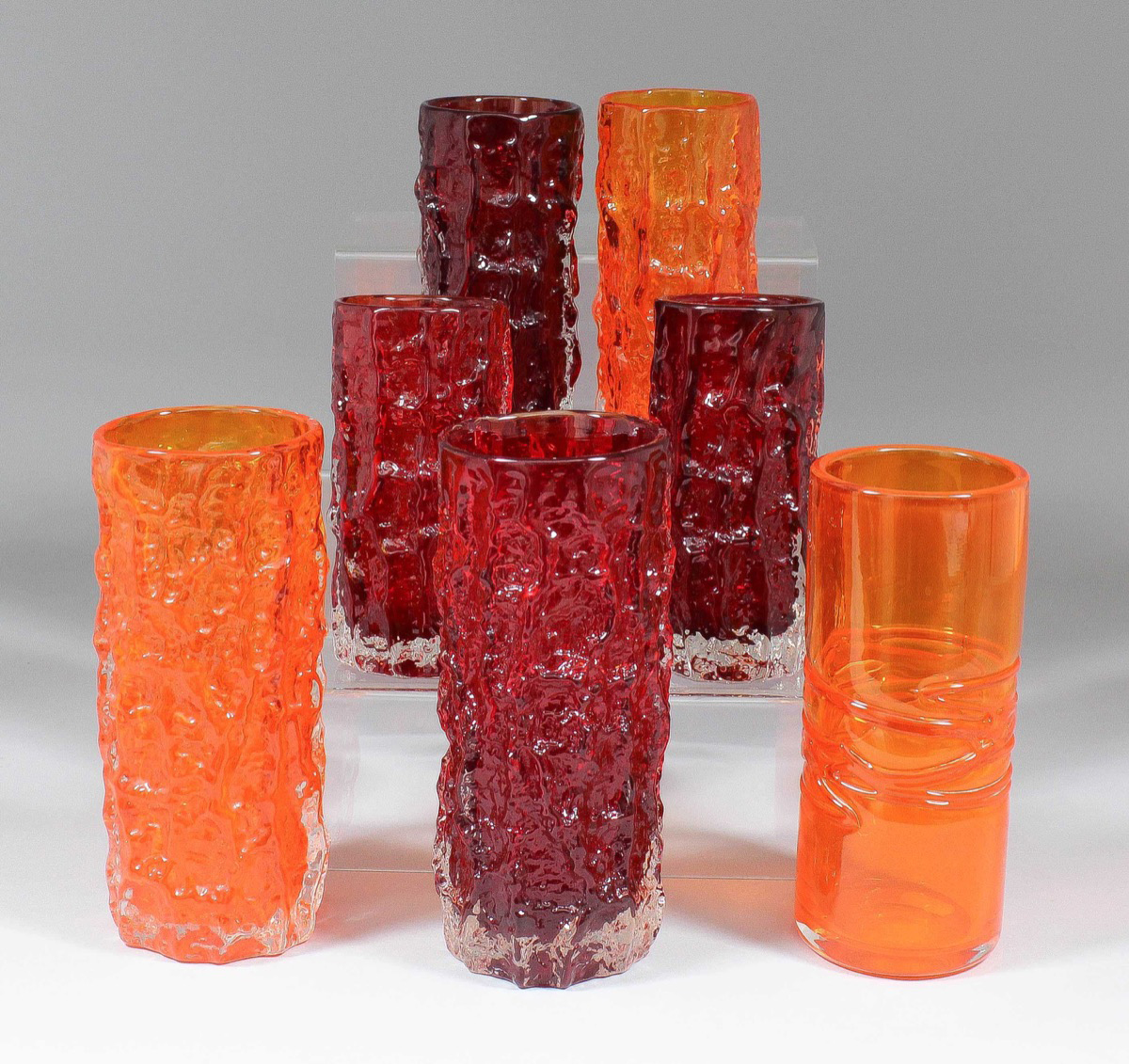
Psychedelic colors, encased in clear glass, including tangerine orange, meadow green, aubergine, pewter, indigo, cinnamon, ruby and kingfisher blue were introduced from 1969 onwards.
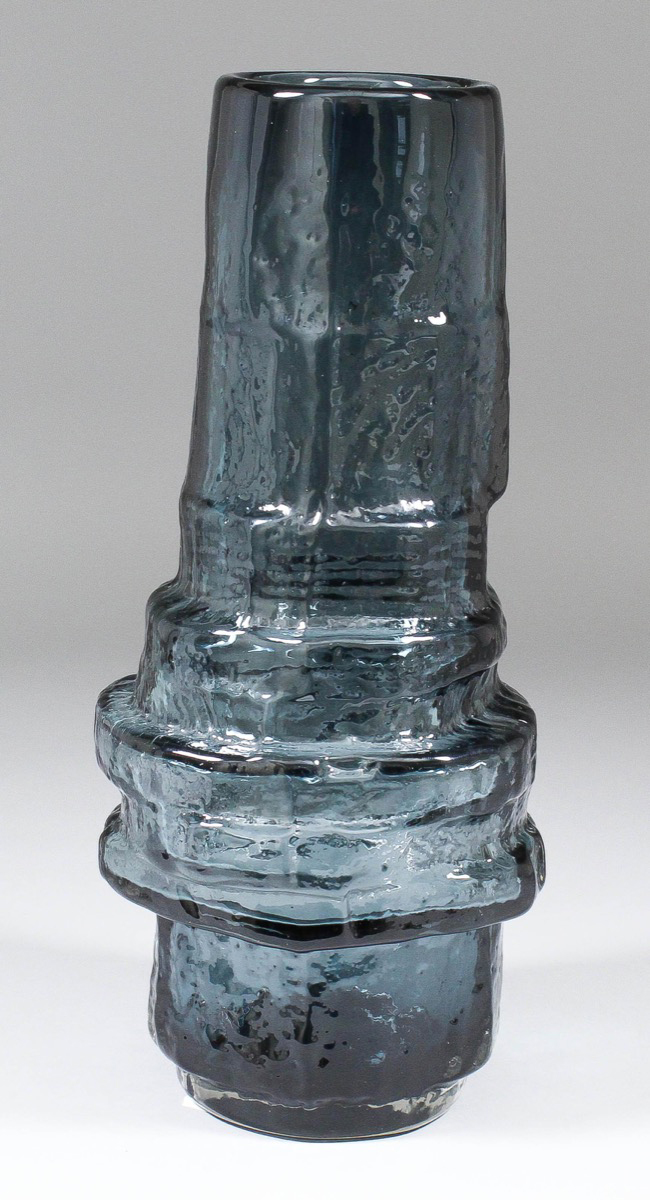
The pieces represented the high point in Whitefriar’s standing in the studio glass movement. However, the high costs of producing hand-blown glass, together with the recession of the late 1970s, saw the company decline and eventually close in 1980 and the site bulldozed.
Since then values of the textured range are said to have risen tenfold and more for rare examples.
_____
By CHRISTOPHER PROUDLOVE


